The NVIDIA GeForce GTX 1080 & GTX 1070 Founders Editions Review: Kicking Off the FinFET Generation
by Ryan Smith on July 20, 2016 8:45 AM ESTMeet the GeForce GTX 1080 & GTX 1070 Founders Edition Cards
Now that we’ve had a chance to take a look at all of the architectural features of Pascal, it’s time to get acquainted with the cards themselves.
As I mentioned in the introduction, the GTX 1080 and GTX 1070 Founders Edition cards are a bit of a departure from the norm for NVIDIA. Their actual construction isn’t too significantly changed (more on that in a bit), but NVIDIA has changed how their reference cards by another name are positioned.
In previous generations the reference cards were the baseline; NVIDIA’s board partners could either build higher end cards to sell at higher prices, or build cheaper cards and sell them near the MSRP to capture greater margins. However with the GTX 1000 series, the reference cards have become a higher end option, selling for anywhere between $50 and $100 higher than NVIDIA’s baseline MSRP. This in turn has shifted how NVIDIA’s partners go about pricing their own cards, as they can either price their high-end cards similar to (or more than) the reference card, or undercut NVIDIA’s pricing with their cheaper cards by pricing them closer to the MSRP.
This action has garnered a lot of feedback for NVIDIA, not too much of which has been positive. Ever since GTX Titan in 2013 in particular, NVIDIA’s reference cards have been the card to beat when it comes to blowers. The balance between heat/performance/noise has been finely tuned, and anecdotally speaking, they have proven to be extremely reliable. As a result, the fact that they are now priced as a premium option is vexing for some – myself included – since it moves them farther out of the hands of consumers.
NVIDIA’s rationale for this has been that they see the cards as premium cards and want to price them accordingly. This is no doubt true to an extent – NVIDIA’s reference coolers are not cheap, especially compared to a simple dual fan open air cooler – but on the other hand NVIDIA’s reference PCBs have always been relatively simple, especially compared to overclocking-focused cards. So how premium their reference design actually is will depend on the eye of the beholder.
What isn’t being said by anyone, but I suspect is going on behind the scenes, is that this is a move to help boost margins and satiate the board partners at the same time. It is not a big secret that reference cards fetch the board partners relatively low margins – they have to buy the complete kits from the GPU vendor – which makes them eager to move to semi and fully-custom cards as quickly as they can. By pricing the reference cards above MSRP, this raises the profit margins for everyone. At the same time it means the partners aren’t under quite so much pricing pressure; NVIDIA needs board partners, and it doesn’t do them any good if the partners don’t make any money. Granted, we’re talking about cards that go for upwards of $700, but as these are low volume cards to begin with, the total profits aren’t very high if margins are thin.
In any case, it’s NVIDIA’s hopes that pricing the reference cards over MSRP will also keep them on the market longer. Though due to the current card shortage, we don’t have a good picture of how this is going to play out; demand needs to first slow down to a point where board partners can make some informed decisions about what cards to produce. However, close NVIDIA partners like PNY and EVGA have continued to sell reference cards right up to the end of some model lines in the past, so I’m not convinced that this has really been an issue. But for now it is what it is.
Moving on to the design of the reference boards themselves, if you’ve seen a reference GTX 780/980/Titan card, then at least externally you have a good idea of what to expect. NVIDIA has retained the same basic design of their reference cooler, utilizing a cast aluminum housing and held together using a combination of rivets and screws. NVIDIA has also kept some of the black accenting first introduced by its predecessors, giving the card distinct black tinted polycarbonate window.
The big change here – and one that appears to be almost entire cosmetic – is that NVIDIA has made the shroud more angular. Rather than the largely squared off shroud on the GTX 980 and its ilk, the GTX 1080 and GTX 1070 use a shroud with more intentional triangular cuts. Over the last couple of years NVIDIA has been making triangles a bigger and bigger part of their branding (even Pascal has a triangle connection), and now this has extended over to their reference cards.
Triangles aside, the overall size of the card is unchanged from past reference designs; at 10.5” long, these cards will fit in the same amount of space occupied by past NVIDIA high-end reference cards. The blower design that NVIDIA has come to refine provides a nice balance between cooling and acoustics; it’s not as quiet as a good open air cooler, but because it’s self-exhausting it’s compatible with virtually every case out there, as there’s no need to rely on chassis cooling to handle the heat from the card.
Cracking open the card and removing the shroud exposes the card’s fan and heatsink assembly. Once again NVIDIA is lining the entire card with an aluminum baseplate, which provides heatsinking capabilities for the VRMs and other discrete components below it, along with providing additional protection for the board.
However in a divergence from the reference GTX 980, the reference GTX 1080 adopts the GTX 980 Ti’s vapor chamber cooler for providing heat transfer between the GPU and the heatsink. Vapor chambers are among the highest performing heat transfer mechanisms, which is why they have been used in NVIDIA’s 250W card. The fact that it’s now on the 180W GTX 1080 is due to a combination of factors; the higher price of the card affords more expensive mechanisms like the vapor chamber, and because NVIDIA is straight up maximizing their cooling capabilities for the GTX 1080. Either way, a vapor chamber should not be necessary for a 180W card – and some discussion could be had about just how useful it is – but none the less it gives the GTX 1080 a top-tier cooling system for a blower type card.
Meanwhile the GTX 1070 takes things down one notch. NVIDIA’s 150W card gets a GTX 980-style cooling system, replacing the vapor chamber with a simpler heatpipe based setup. The vapor chamber may very well be overkill for the GTX 1080, but it definitely would be for the GTX 1070, so a heatpipe baseplate setup is still more than enough for a lower power card like the GTX 1070.
Popping off the cooler, we see NVIDIA’s reference PCB. Unsurprisingly, it’s not too far removed from the reference GTX 980 PCB. At the center we find the GP104 GPU, surrounded by 8 8Gb Micron GDDR5X memory modules, rated for 10Gbps each.
Towards the far side of the PCB we find the card’s power delivery components, which for GTX 1080 is composed of a 5+1 phase design. Here NVIDIA is using 5 power phases for the GPU itself (one more than GTX 980), and then another phase for the GDDR5X. For a 180W card this configuration is more than enough for stock operations and mild overclocking – GTX 1080’s power target limit is 120%, or 216W – however hardcore overclockers will probably end up gravitating towards custom designs more with more heavily overbuilt power delivery systems.
One thing that isn’t immediately evident looking at the PCB is the overall efficiency of the design. One of NVIDIA’s marketing angles for the GTX 1080/GTX 1070 is the craftsmanship of the reference PCB and component selection, which they indicate has tighter tolerances than the GTX 900 series. Among other changes, NVIDIA has been able to reduce peak voltage noise through a combination of dual-FET VRMs and greater filtering by the capacitors. The end result is that NVIDIA is claiming that the GTX 1080’s power delivery circuitry is around 6% more efficient than the GTX 980’s.
Meanwhile for the GTX 1070, we have the same board with a slightly different configuration. Power delivery is down to 4+1, and the Micron GDDR5X has been replaced with standard 8Gbps GDDR5.
Flipping the card over to the back, we find NVIDIA’s new backplate. The new plate is primarily to protect the backside of the card (there aren’t any major components on the back to cool) and like the GTX 980 before it, includes removable components. The backplate is split into two parts, and either one or both parts can be removed. The idea behind this split is that similar to the GTX 980’s backplate, while the backplate is nice to have, it gets in the way of tightly packed SLI setups. So removing the plate piece directly opposite a fan would give an adjacent card more room to pull in fresh air for cooling purposes.
Moving on, towards the top of the card we find the requisite SLI and power connectors. With the GTX 1000 series NVIDIA has become the latest company to shift from dual 6-pin power connectors to a single 8-pin power connect for cards that need between 150W and 225W. Per the relevant specifications, the power delivery capabilities of the two configurations are identical. But one cable is easier to route and plug in than two, making for slightly cleaner builds and happier technology editors. As for the SLI connectors, as we discussed in our SLI section, these connectors have the same physical interface as the older SLI connectors, but now operate at up to 650MHz on Pascal. A recent LED bridge – or better still, the new HB bridge – is necessary to get the best performance out of SLI with these cards.
Meanwhile, looking at NVIDIA’s display I/O configuration, it’s physically unchanged from prior reference cards. What’s new here is that Pascal supports the newer DisplayPort 1.3/1.4 standards, along with HDMI 2.0b. This means we’re looking at 3x DisplayPort 1.3/1.4, 1x HDMI 2.0b, and 1x DL-DVI-D. The latter is also a change from GTX 980, as NVIDIA has gone from a digital + analog DVI port to a pure digital DVI port. So if for whatever reason you wanted to hook up an analog monitor to a $400+ video card, you will need a DisplayPort to VGA adapter, as GTX 1080/1070 do not provide a native analog output.
It should also be noted that as the physical port arrangements haven’t changed in a generation, neither have the underlying display capabilities. Like Maxwell 2 before it, Pascal supports up to 4 displays, which can be muxed among 6 display outputs.


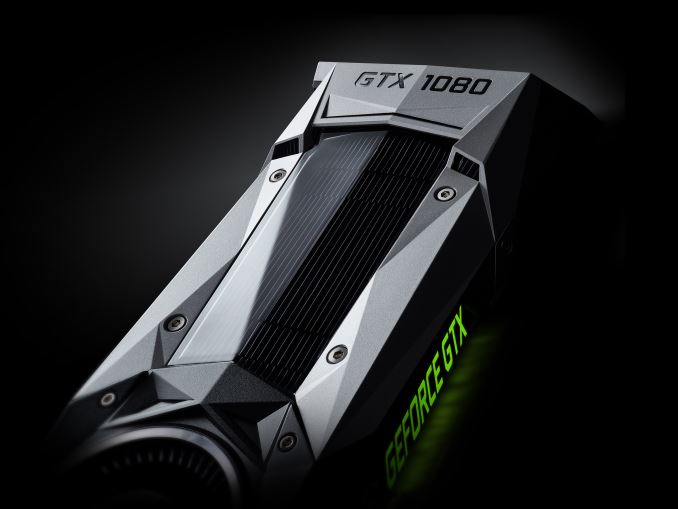

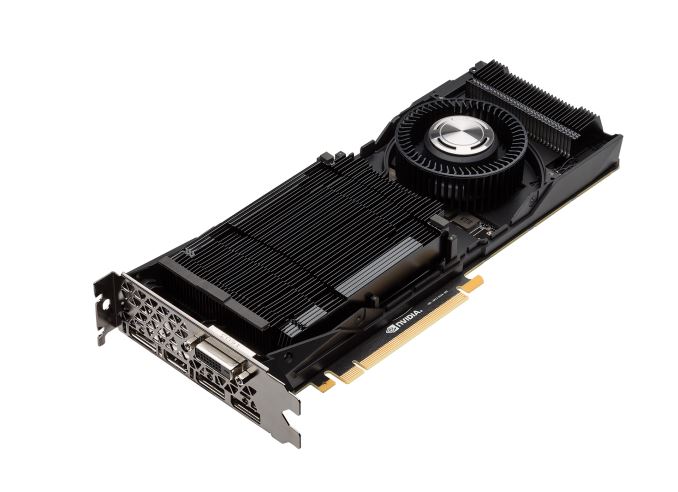
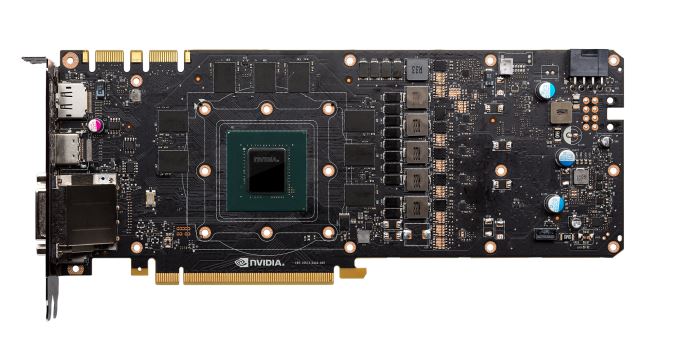
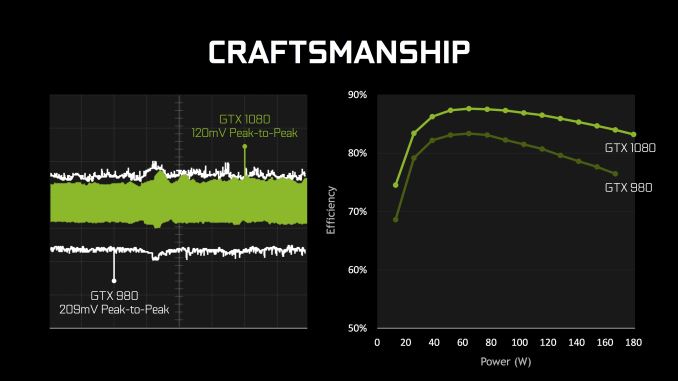
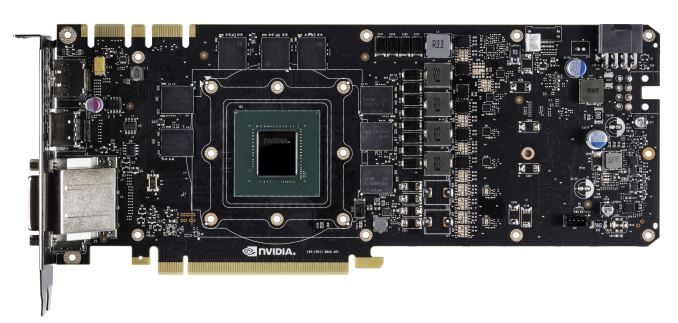
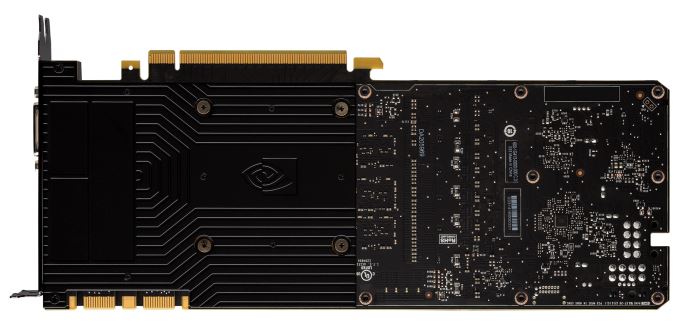
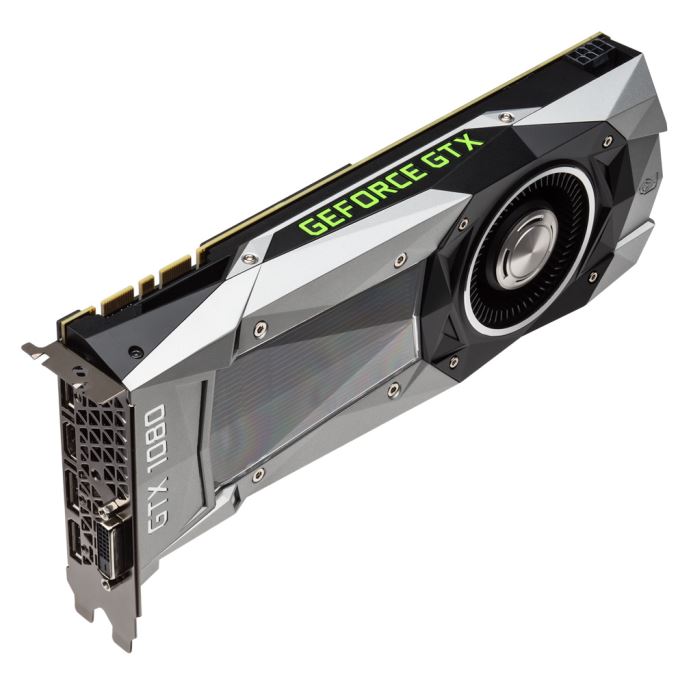
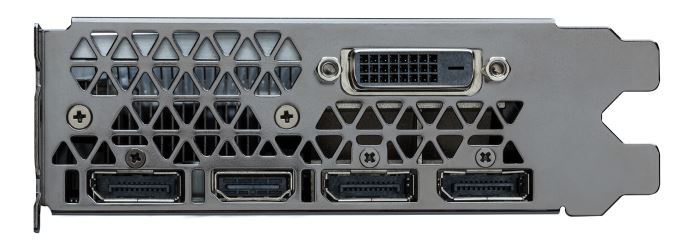








200 Comments
View All Comments
grrrgrrr - Wednesday, July 20, 2016 - link
Solid review! Some nice architecture introductions.euskalzabe - Wednesday, July 20, 2016 - link
The HDR discussion of this review was super interesting, but as always, there's one key piece of information missing: WHEN are we going to see HDR monitors that take advantage of these new GPU abilities?I myself am stuck at 1080p IPS because more resolution doesn't entice me, and there's nothing better than IPS. I'm waiting for HDR to buy my next monitor, but being 5 years old my Dell ST2220T is getting long in the teeth...
ajlueke - Wednesday, July 20, 2016 - link
Thanks for the review Ryan,I think the results are quite interesting, and the games chosen really help show the advantages and limitations of the different architectures. When you compare the GTX 1080 to its price predecessor, the 980 Ti, you are getting an almost universal ~25%-30% increase in performance.
Against rival AMDs R9 Fury X, there is more of a mixed bag. As the resolutions increase the bandwidth provided by the HBM memory on the Fury X really narrows the gap, sometimes trimming the margin to less that 10%,s specifically in games optimized more for DX12 "Hitman, "AotS". But it other games, specifically "Rise of the Tomb Raider" which boasts extremely high res textures, the 4Gb memory size on the Fury X starts to limit its performance in a big way. On average, there is again a ~25%-30% performance increase with much higher game to game variability.
This data lets a little bit of air out of the argument I hear a lot that AMD makes more "future proof" cards. While many Nvidia 900 series users may have to upgrade as more and more games switch to DX12 based programming. AMD Fury users will be in the same boat as those same games come with higher and higher res textures, due to the smaller amount of memory on board.
While Pascal still doesn't show the jump in DX12 versus DX11 that AMD's GPUs enjoy, it does at least show an increase or at least remain at parity.
So what you have is a card that wins in every single game tested, at every resolution over the price predecessors from both companies, all while consuming less power. That is a win pretty much any way you slice it. But there are elements of Nvidia’s strategy and the card I personally find disappointing.
I understand Nvidia wants to keep features specific to the higher margin professional cards, but avoiding HBM2 altogether in the consumer space seems to be a missed opportunity. I am a huge fan of the mini ITX gaming machines. And the Fury Nano, at the $450 price point is a great card. With an NVMe motherboard and NAS storage the need for drive bays in the case is eliminated, the Fury Nano at only 6” leads to some great forward thinking, and tiny designs. I was hoping to see an explosion of cases that cut out the need for supporting 10-11” cards and tons of drive bays if both Nvidia and AMD put out GPUs in the Nano space, but it seems not to be. HBM2 seems destined to remain on professional cards, as Nvidia won’t take the risk of adding it to a consumer Titan or GTX 1080 Ti card and potentially again cannibalize the higher margin professional card market. Now case makers don’t really have the same incentive to build smaller cases if the Fury Nano will still be the only card at that size. It’s just unfortunate that it had to happen because NVidia decided HBM2 was something they could slap on a pro card and sell for thousands extra.
But also what is also disappointing about Pascal stems from the GTX 1080 vs GTX 1070 data Ryan has shown. The GTX 1070 drops off far more than one would expect based off CUDA core numbers as the resolution increases. The GDDR5 memory versus the GDDR5X is probably at fault here, leading me to believe that Pascal can gain even further if the memory bandwidth is increased more, again with HBM2. So not only does the card limit you to the current mini-ITX monstrosities (I’m looking at you bulldog) by avoiding HBM2, it also very likely is costing us performance.
Now for the rank speculation. The data does present some interesting scenarios for the future. With the Fury X able to approach the GTX 1080 at high resolutions, most specifically in DX12 optimized games. It seems extremely likely that the Vega GPU will be able to surpass the GTX 1080, especially if the greatest limitation (4 Gb HBM) is removed with the supposed 8Gb of HBM2 and games move more and more the DX12. I imagine when it launches it will be the 4K card to get, as the Fury X already acquits itself very well there. For me personally, I will have to wait for the Vega Nano to realize my Mini-ITX dreams, unless of course, AMD doesn’t make another Nano edition card and the dream is dead. A possibility I dare not think about.
eddman - Wednesday, July 20, 2016 - link
The gap getting narrower at higher resolutions probably has more to do with chips' designs rather than bandwidth. After all, Fury is the big GCN chip optimized for high resolutions. Even though GP104 does well, it's still the middle Pascal chip.P.S. Please separate the paragraphs. It's a pain, reading your comment.
Eidigean - Wednesday, July 20, 2016 - link
The GTX 1070 is really just a way for Nvidia to sell GP104's that didn't pass all of their tests. Don't expect them to put expensive memory on a card where they're only looking to make their money back. Keeping the card cost down, hoping it sells, is more important to them.If there's a defect anywhere within one of the GPC's, the entire GPC is disabled and the chip is sold at a discount instead of being thrown out. I would not buy a 1070 which is really just a crippled 1080.
I'll be buying a 1080 for my 2560x1600 desktop, and an EVGA 1060 for my Mini-ITX build; which has a limited power supply.
mikael.skytter - Wednesday, July 20, 2016 - link
Thanks Ryan! Much appreciated.chrisp_6@yahoo.com - Wednesday, July 20, 2016 - link
Very good review. One minor comment to the article writers - do a final check on grammer - granted we are technical folks, but it was noticeable especially on the final words page.madwolfa - Wednesday, July 20, 2016 - link
It's "grammar", though. :)Eden-K121D - Thursday, July 21, 2016 - link
Oh the ironychrisp_6@yahoo.com - Thursday, July 21, 2016 - link
oh snap, that is some funny stuff right there